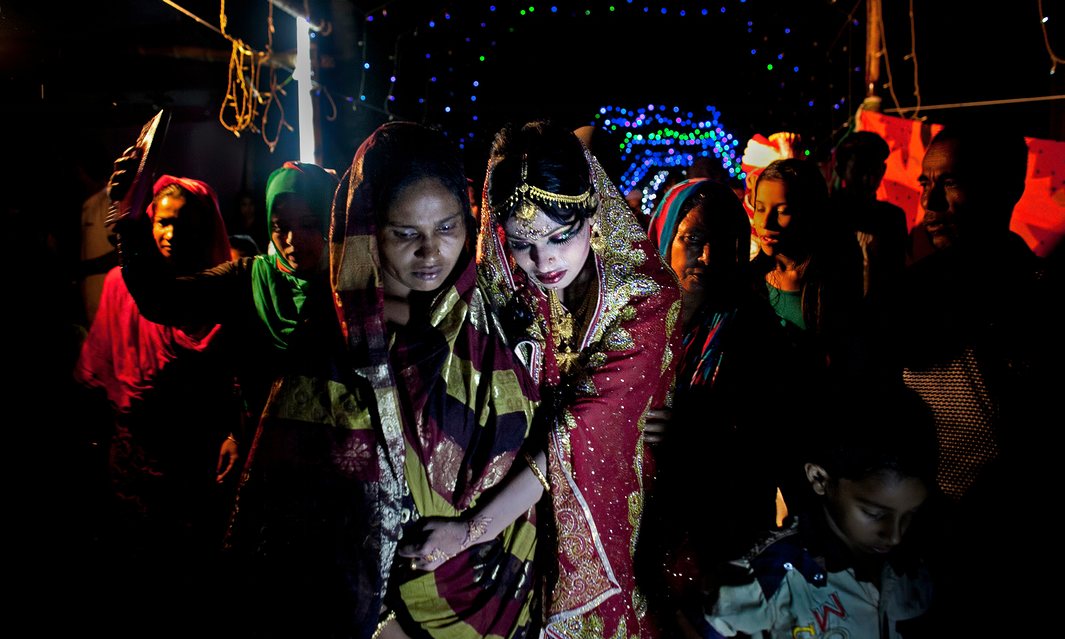Educating girls could cut child marriage in Bangladesh by a third!
Child marriage in Bangladesh could drop by up to one-third if girls receive educational support or skills training, according to a study looking at ways to combat the practice in a country with one of the highest prevalence rates.
T.he Population Council’s Bangladeshi Association for Life Skills, Income and Knowledge for Adolescents (Balika) project evaluated the success of three approaches in delaying the number of girls under 18 being married off.
Bangladesh has the fourth highest rate of child marriage in the world. In terms of absolute figures, Bangladesh comes second to India for the number of girls married before they are 15.
More than 9,000 girls between 12 and 18, living in 72 communities in three districts of Bangladesh that are considered “hotspots” for early marriage – Khulna, Satkhira and Narail – took part in the study, which began in 2012.
Over 18 months, girls received either tutoring in maths and English, training in their rights, critical thinking and decision-making, or jobs-based training. Each girl had weekly meetings with mentors.
Another 24 communities acted as a control group for the study. Girls in these communities received no services.
The results, published during the Commission on the Status of Women last month, show that the girls receiving extra activities were one-third less likely to be married as children than girls living in the communities not involved in the project.
Girls who received extra tutoring or life-skills training were 31% less likely to be married.
Those who received jobs training were 23% less likely to marry.
“[The study is] giving the first concrete results about what we can do to reduce child
marriage,” said Sajeda Amin, a senior associate and lead researcher on the study.
“Now we have not one, but three approaches that are proven to work. The Balika results show that programmes which build girls’ skills and knowledge and elevate their visibility and status in their families and communities while keeping them safe can significantly reduce the average child marriage rate in the community.
“If we want to effectively reduce child marriage in Bangladesh, we must employ new approaches that empower girls, and engage their families and their communities so girls are seen as an asset, not a liability.”
The NGO, which conducts research on health and development topics, said efforts to tackle child marriage need to start early, provide skills training so girls can thrive, and should involve the community. The Balika project was most successful in delaying marriage among girls under 16 and in school.
Amin said 34 communities involved in the project had decided to continue supporting girls in some way after the 18-month period, such as paying for mentors or for teachers to continue to run the training programmes. “One local government has actually budgeted to spend 10% of its budget on women and girls,” said Amin.
Shifting attitudes towards child marriage in Bangladesh is proving difficult. “Child marriage is not really moving forward,” said Amin. “[Child marriage figures] are surprisingly high because there has been a lot of progress in a lot of other spheres – investing in schooling,reducing young births.”
“When you go to rural Bangladesh, it’s still so common. At the Girl Summit, the prime minister declared she would reduce child marriage. No attention was paid to it as a central social problem. Now, everyone is paying attention,” added Amin, whose mother and grandmother were both married before they were 18.
At the summit, held in London in 2014, the prime minister, Sheikh Hasina, announced her intention to end child marriage among under-15s by 2021 and reduce by more than one-third the number of girls married between the ages of 15 and 18. The country has set 2041as the target date to eliminate the practice.
However, last year Human Rights Watch said the government was not doing enough to act on its promises.
Read More at: http://bit.ly/206jLnl


